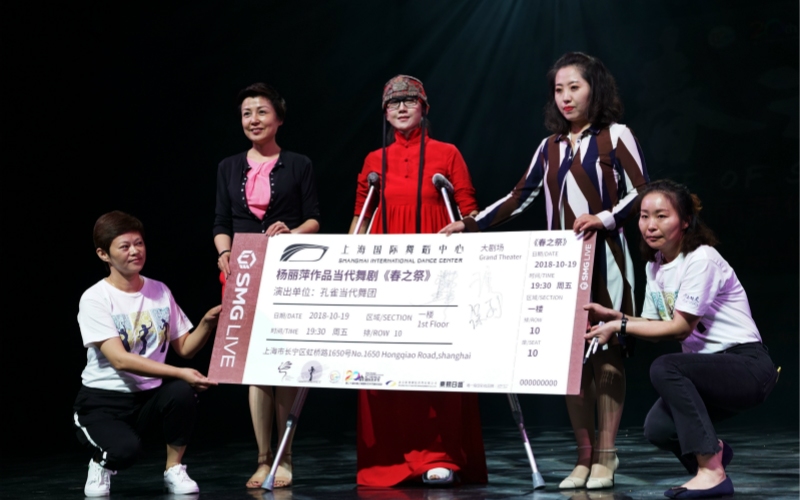Chinese perspectives in a western classic
2018-09-03
Acclaimed choreographer and dancer Yang Liping's rendition of The Rite of Spring to premiere in China in October, Cao Chen reports in Shanghai.
The Rite of Spring by Yang Liping, the iconic Chinese choreographer and dancer, will make its world premiere at the Yunnan Arts University in October before embarking on its global tour with its first stop being the Oct 19 to 21 Shanghai International Arts Festival.
The dance performance will then go on tour in cities including New York, London and Amsterdam.
Composed by Russian composer Igor Stravinsky, The Rite of Spring depicts primitive rituals celebrating the advent of spring, when a young girl is chosen as a sacrificial victim and dances herself to death.
Yang's interpretation of this revered work for dance in the 20th century, however, focuses on the perspectives of Chinese culture.
"Women's sacrifice in Western performance is filled with fear and doubt, but this act is more about voluntary and dedication in ethnic minority areas in China, such as Yunnan province, where similar ritual sacrifice occurs," said Yang, who is from the Bai ethnic group in Yunnan.
According to Yang, her interpretation of The Rite of Spring draws inspiration from symbols of nature, Chinese folk dance and traditional music, while incantation, sacrifice and reincarnation form the thematic structure.
Meanwhile, the peacock - it is the symbol of beauty, nature and life - is cast as the sacred bird in the production and it would eventually find empowerment in her sacrifice and be reincarnated. Yang has also infused her famous peacock dance moves into the performance which is based on traditional Tibetan and modern dance.
The performance will also feature a lion, which is an important symbol of Tibetan culture that symbolizes power, with his purpose being to accept the peacock's sacrifice.
The music is constructed in three sections. The first and last section will use a specially created score inspired by traditional music from Tibet while the second section uses the original The Rite of Spring by Stravinsky.
Yang says that the work is about the conflict between inevitable nature (spring) and human control (sacrifice), and the idea behind the new score was influenced by Tibetan and Chinese symbols of nature, the cycle of life and death, and the inevitability of rebirth.
Last year, a segment of the show was presented to the international dance community, drawing praise and earning it many invitations to the world's leading festivals.
The China Shanghai International Arts Festival (CSIAF) has agreed to commission the new production this year.
"Through Yang's work, the Festival, as a creative and professional platform for original works, expects to bring a unique Chinese version of a Western tale to the world stage," said Wang Juan, president of China Shanghai International Arts Festival Center.
Sadler's Wells Theatre in London, the Edinburgh International Festival, and the Melbourne Arts Festival have also booked the performance as joint producers.
The Edinburgh International Festival has announced its plan to bring the performance to the Festival Theatre from Aug 22 to 24 in 2019, with ticket sales starting next March.
"This is a perfect example of the strong cultural links that exist between Scotland and China, and it is sure to be one of the highlights of the festival," said Nicola Sturgeon, first minister of Scotland, during her visit to China in April this year.
Discussions on collaboration are also underway with festivals in the United States and Spain.
Despite her lack of professional training, Yang became one of the most prominent Chinese dancers to have graced the global dance community. She rose to fame in 1986 following her performance of her original dance piece Spirit of the Peacock. A frequent performer on international stages, Yang is known for her unique style that creates a dialogue between Western and Chinese cultures.
